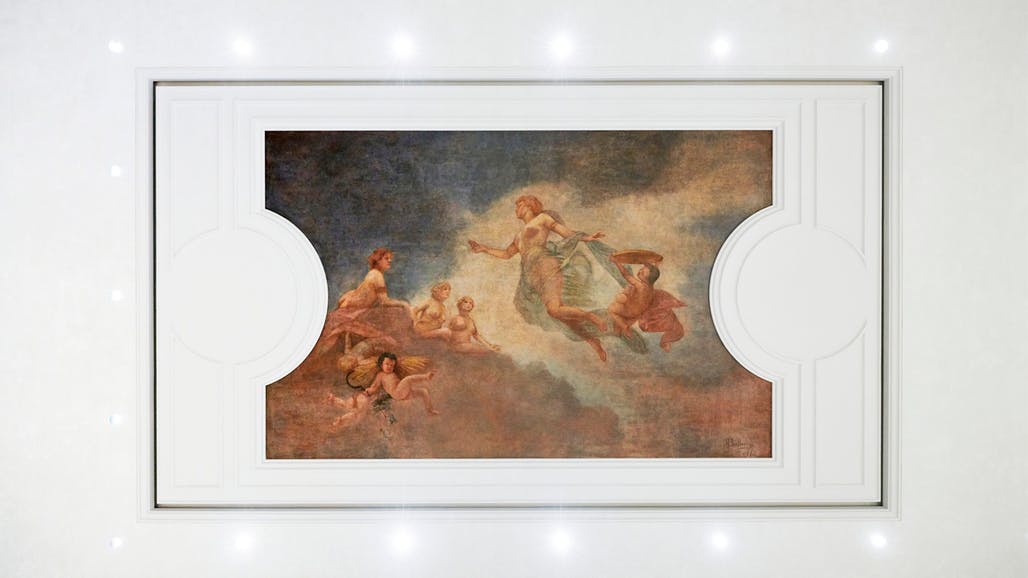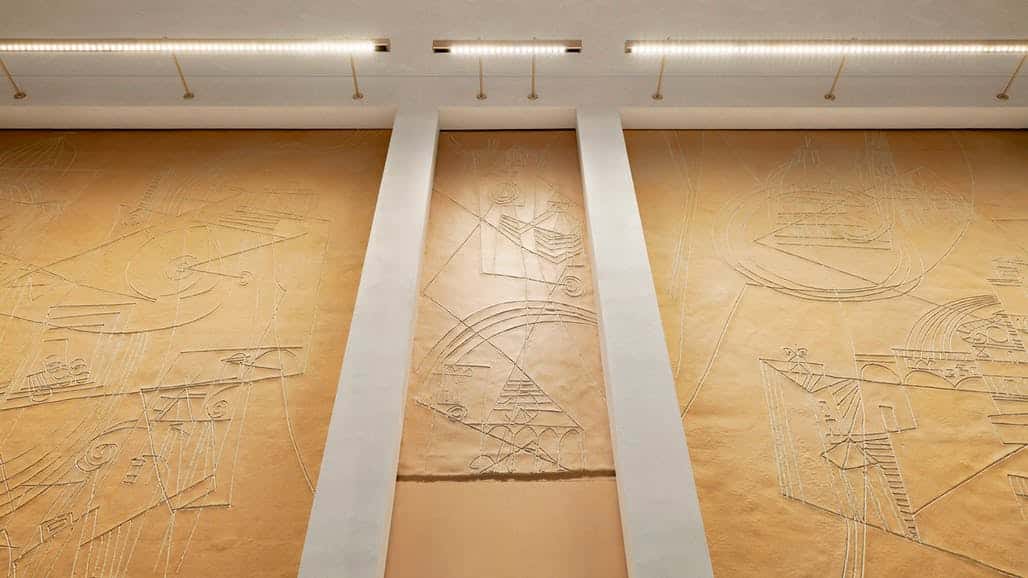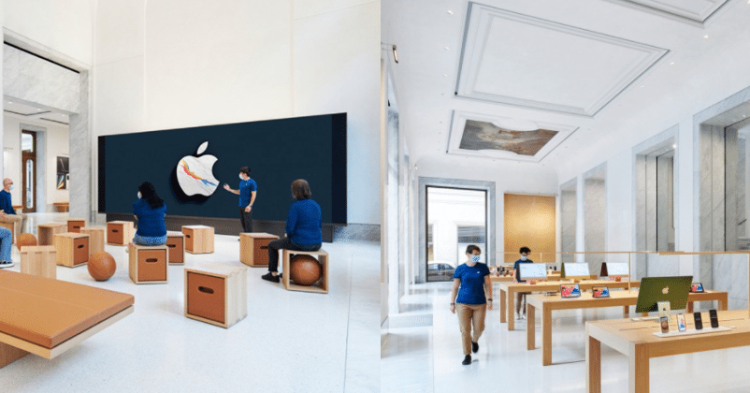In a collaboration with Foster+Partners, Apple transformed a 19th Century Palazzo, the historic Palazzo Marignoli situated in the heart of the heritage city of Rome into a retail store. This store not only serves as a retail store for Apple but also imbibes the Roman arts and culture into its setting.
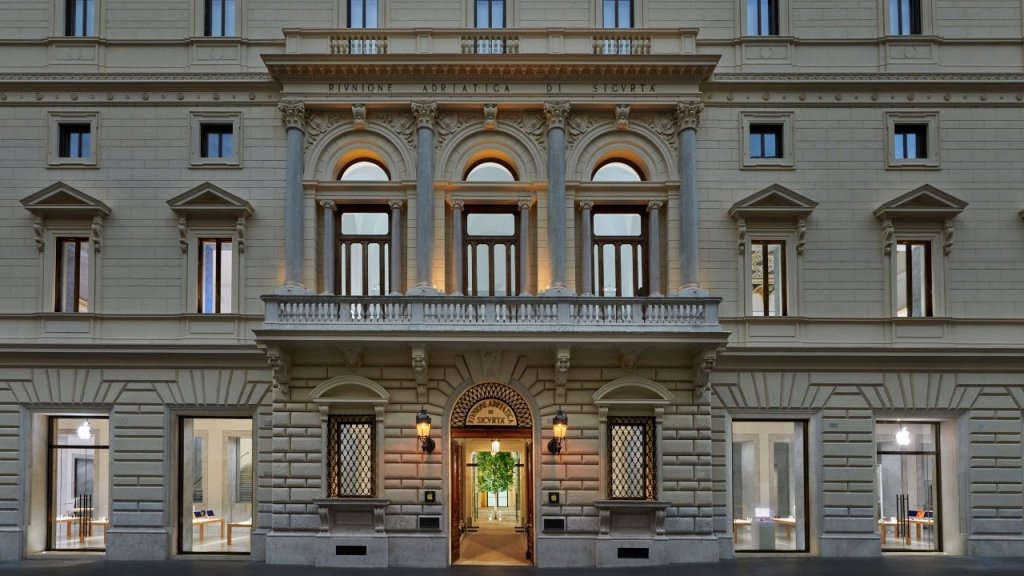
This palazzo was built in the 1870s, following a design by the famous architect Salvatore Bianchi. It was originally a centre of arts wherein local artisans, writers and actors would be found in a quaint cafe called Caffè Aragno in this very Palazzo Marignoli. Apple will also be continuing this tradition at the store wherein it will be holding Today At Apple sessions in the fields of content creation, music, design and also coding.
Architecture and Design
The build of this palazzo is extensive and Apple has made certain eye-catching changes that imbibe the roman culture very beautifully. The staircase which was originally built in the year 1888 has been restored with Carrara Marble which is sourced locally.

There is a courtyard that sits in the centre of the building and also a ballroom that the Palazzo hosts, which will also be used to conduct the Today At Apple sessions.

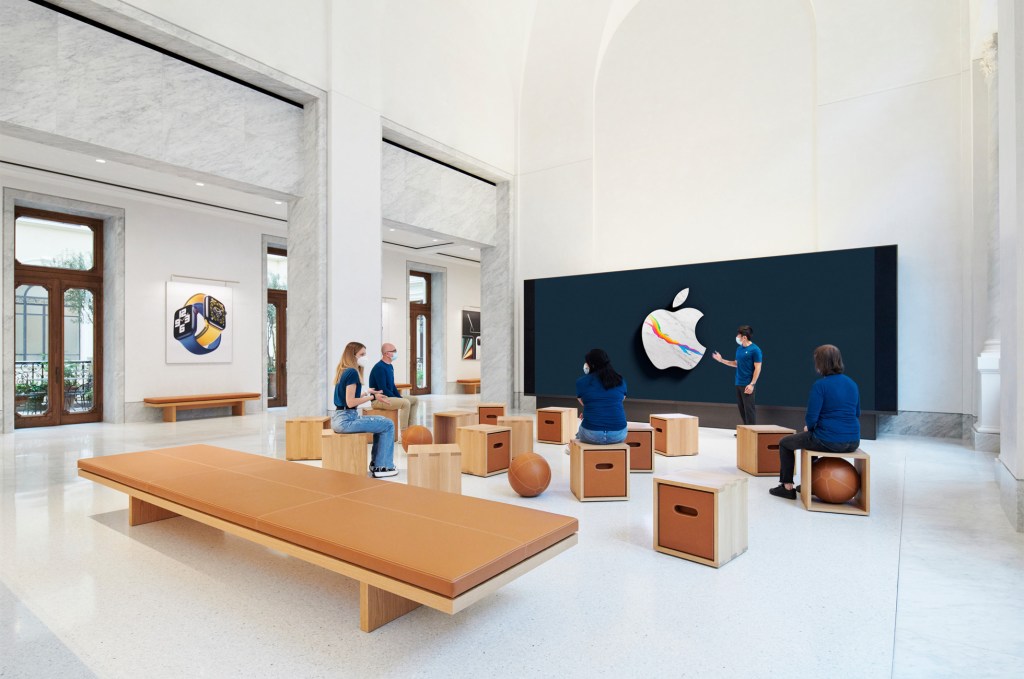
One of the most extensive restoration projects that Apple has undertaken, this one is certainly one which will stand out amongst all. Since it also keeps in mind the roman arts and culture while setting up the store, it makes it appear a lot more intriguing and adds the semblance that Apple seeks in all its store layout.
The original paintings have also been restored while the ceilings have been painted by artisans.
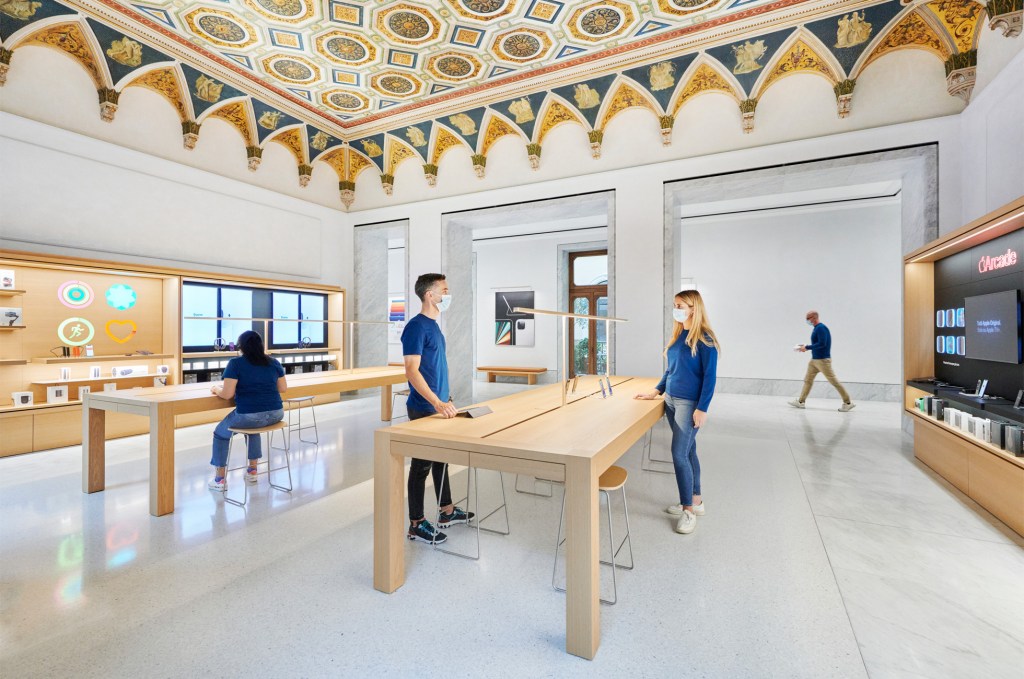 The Geometrically Painted Ceilings [/caption]
The Geometrically Painted Ceilings [/caption]

The beautiful blend that we observe amongst all Apple locations which incorporates a very minimalistic appeal is complemented by the historical architecture that is depicted in the Palazzo. This restoration allows various artworks that were found in the former café space, to be restored in the store design, including two large ceiling paintings, Fabio Cipolla’s “Dawn” and Ettore Ballerini’s “Dusk”. Moreover, multiple graffiti panels created by Afro Basaldella, a contemporary of Picasso were also uncovered in this refurbishment.
